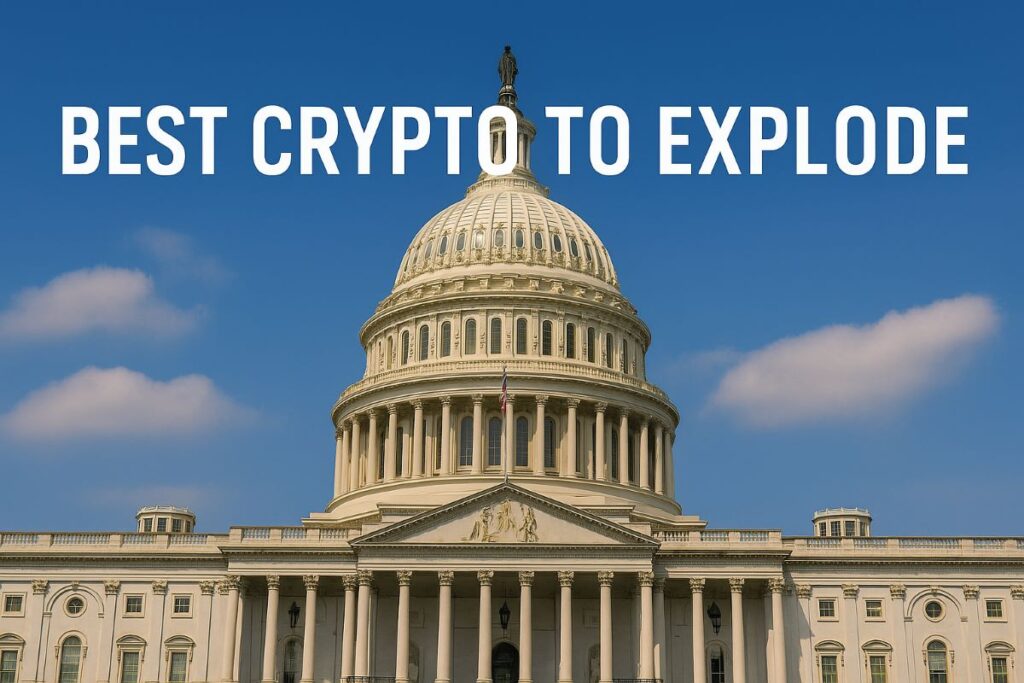In the rapidly evolving world of finance, understanding the interplay between regulatory policies and market dynamics is crucial. Recent discussions about banking deregulation in the United States have sparked significant interest among investors and financial analysts. With changes to key regulations like the Supplementary Leverage Ratio (SLR), there could be substantial impacts on liquidity, investment strategies, and the burgeoning cryptocurrency market. As we delve deeper into this topic, this article aims to provide a comprehensive overview of these developments and what they mean for future financial landscapes.
Impending Deregulation: A Catalyst for Cryptocurrency Growth?
Understanding the Changes to the Supplementary Leverage Ratio (SLR)
The U.S. government’s potential plan to adjust the Supplementary Leverage Ratio (SLR) has been generating buzz among financial circles. This regulation, established in the wake of the 2008 financial crisis, mandates banks to hold a certain amount of high-quality capital against their total assets, including low-risk securities such as U.S. Treasuries. However, this requirement has been criticized for hindering banks’ ability to lend and invest effectively, especially in low-risk environments.
By proposing changes to exempt certain low-risk assets from the SLR calculation, the United States could potentially unlock up to $2 trillion in bank balance sheets. This adjustment is expected to enhance banks’ lending capacity, thus injecting more liquidity into the financial system. Cryptocurrency markets, particularly Bitcoin, are anticipated to benefit from this influx of capital as investors seek alternatives to traditional financial assets.
The Political Implications: A Move to Garner Banking Sector Support
Recently, the relationship between the banking sector and the U.S. government has been strained, largely due to trade policies and regulatory uncertainties. The proposed SLR revisions could be a strategic move by the administration to win back favor with financial institutions. By aligning more closely with the interests of the banking sector, the government may be attempting to stabilize domestic investments and deter capital flight to foreign markets.
The Broader Impact: Beyond U.S. Borders
Changes to the SLR in the U.S. could have global ramifications. An alignment of U.S. regulatory standards with those of other countries could prompt similar deregulation efforts abroad, potentially altering the international financial landscape. While increased liquidity and investment flexibility are advantageous, some experts warn that relaxing capital requirements might elevate systemic risk, particularly during periods of market volatility.
Cryptocurrencies Poised for Growth
With the anticipated deregulation, several cryptocurrencies are expected to experience significant growth. Here are three cryptos that could potentially see robust gains:
MIND of Pepe ($MIND) – Innovative AI and Meme Coin Hybrid
MIND of Pepe ($MIND) combines the viral appeal of meme coins with cutting-edge AI technology. This project not only appeals to the meme coin community but also stands out for its technology-driven approach. The AI agent component is designed to learn from market trends and deliver valuable insights to token holders. Current predictions suggest a notable increase in $MIND’s value, making it a potential investment prospect in the evolving crypto market.
Solaxy ($SOLX) – Solana’s First Layer-2 Solution
Solaxy ($SOLX) is pioneering as Solana’s first Layer-2 solution, aiming to enhance scalability and reduce transaction costs. By integrating Solana’s speed with Ethereum’s scalability, Solaxy addresses persistent issues like transaction failures. The presale success and technology roadmap position $SOLX as a promising contender in the crypto space, with significant growth potential.
Ethereum ($ETH) – A Resilient Digital Asset with Institutional Appeal
Despite past volatility, Ethereum remains a stalwart in the cryptocurrency landscape. Its recent growth and institutional adoption through ETFs make it a key player amid potential regulatory changes. Ethereum’s robust ecosystem and continuous development efforts contribute to its attractiveness as a long-term investment, especially as market conditions evolve.
Potential Outcomes of SLR Adjustments
The possible relaxation of the SLR could lead to several outcomes:
- Increased liquidity, allowing banks to allocate more capital towards investment opportunities, potentially boosting the crypto market.
- Criticism from those concerned that reduced capital requirements might heighten financial vulnerabilities, especially during economic downturns.
- Pressure on international regulators to follow suit, possibly reshaping global financial standards.
Is Fantom (FTM) a good long-term investment?
Fantom (FTM), known for its scalable and efficient blockchain technology, has captured the attention of investors. While it shows promise, potential investors should evaluate ongoing market trends, technological developments, and competitive positioning before committing to a long-term investment.
What are the risks of deregulating the SLR?
The primary risk of deregulating the SLR lies in increased financial system vulnerability during volatile market periods. While it could enhance lending and investment flexibility, it may also reduce the ability of banks to absorb losses during economic stress, leading to potential systemic risks.
How might international markets react to U.S. deregulation efforts?
International markets could respond by reassessing their regulatory frameworks, especially if U.S. deregulation leads to increased competitiveness for American financial institutions. This could trigger a wave of similar deregulation efforts globally, impacting international financial stability and market dynamics.
As the financial landscape continues to shift, keeping informed about regulatory changes and their potential impacts is essential for investors and industry stakeholders alike. This article serves as a guide to navigating the complexities of these developments and understanding their broader implications for the cryptocurrency market and beyond.

